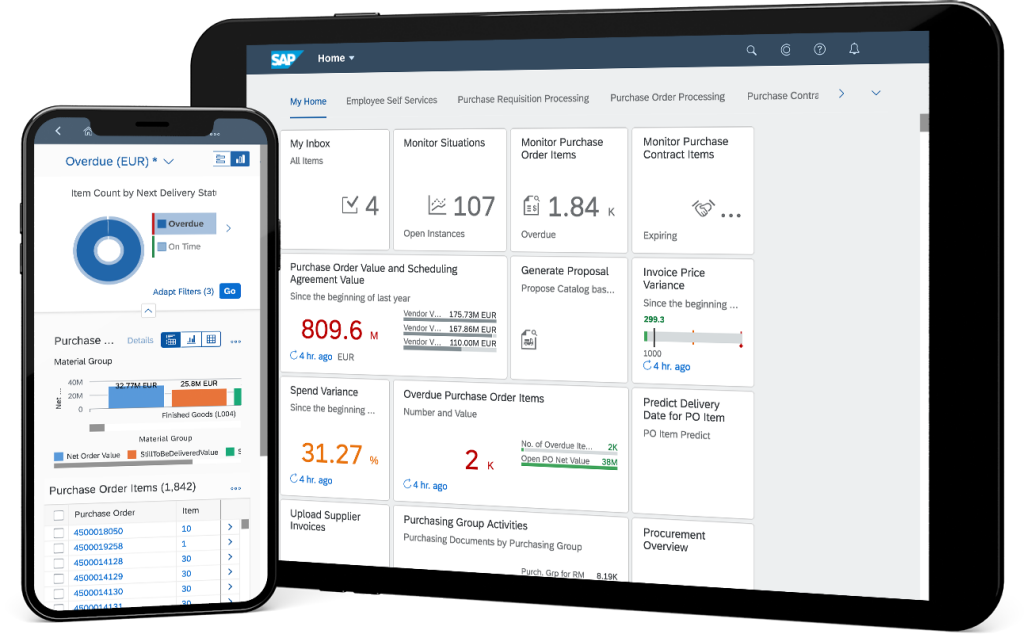Without the SAP ECC, S/4HANA Malaysia wouldn’t probably exist, or does at a much later time than its initial release in reality. Also known as the SAP ERP (Enterprise Resource Planning), it is the core business product in SAP Business Suite, and primarily serves to incorporate all key business functions of an organization in one place, ranging from financials to human resources.
SAP S/4HANA, launched in 2015, is a successor to the previous SAP R/3 in 1992 and allows users to choose between deployment through a cloud solution, on-premise, or a combination of both. The S/4HANA is an advanced version of its predecessor as it is designed to solve more complex problems and manage much larger amounts of data.
The latest version of the product is the on-premise S/4HANA 2021, released in October last year. Because SAP is ending its support for ECC and previous versions in 2027, many companies are migrating towards the S/4HANA with SAP’s Activate framework.
So what is the difference between ECC and S/4HANA?
Database
Despite the advanced features, S/4HANA is only designed to run in the SAP HANA, an in-memory database that allows swifter reaction times.
Meanwhile, ECC can run in third party databases such as Oracle, MaxDB, IBM and Informix.
New General Ledger (GL)
S/4HANA only runs in the new GL structure as its functionality, as well as a parallel ledger is required for new asset accounting. While optional for the ECC, a Material Table is mandatory and assists in valuations of two additional currencies.
The ECC can use either the classic or “new” GL structure, which the S/4HANA’s GL’s technology is pretty similar to.
Merger Of Controlling (CO) and Finance (FI)
In ECC, the FI GL accounts are mapped to CO primary cost elements. The cost elements are eventually merged as GL accounts and both can be stored in S/4HANA’s structure of the universal journal.
Customer vs Vendor to Business Partner
ECC maintains separate customer and vendor files, even in cases where an organization collaborates with a partner for both categories. In the case of S/4HANA, the common data structure elements of both files are already integrated as a Business Partner record.
Tables
S/4HANA uses HANA’s column base database tables, resulting in speed from fewer distinct values and parallel processing. There are also no summary, index or history tables as they are replaced by line tables. Furthermore, GL, AP, AR, FI, AA, CO and ML tables are all combined into a single-line item table ACDOCA Universal Journal.
Inventory management is reduced from 26 to a single table called MATDOC (Material Document line item). The pricing table, KONV, is replaced by a newer version called PRCD_ELEMENTS.
Rebates
While ECC runs customer rebates through an existing SD rebate processing, S/4HANA employs settlement management through condition contracts.
Interface
ECC’s primary interface is a GUI, while S/4HANA uses a Fiori. Fiori apps are available in the latter’s system for activity performances and real time generated reports.
Material Number Length
The ECC’s number of characters of the Material Number’s length is 18. This is extended to 40 in the S/4HANA.
Similarities

Despite the array of differences, both SAP ECC and SAP S/4HANA share a number of similarities. Their common goal is to enable business operations for sales, procurement, manufacturing, distribution, service, quality, accounting operations and plant maintenance.
Another common feature they share is the centralization of an organization’s operational information in a single database, as well as the standardization and automation of routine tasks and a single base for operating reporting.
As ECC and S/4HANA are both modular systems, businesses can use either to use needed pieces and configure them to meet logical business requirements.
